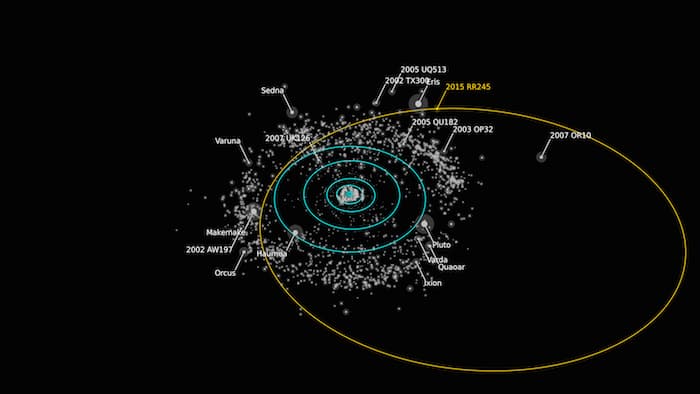
The object was first spotted back in February by the Canada-France-Hawaii Telescope in Hawaii, in images taken in September last year as part of the Outer Solar System Origins Survey (OSSOS). The survey is an ongoing collaboration between dozens of scientists at institutions from eight countries, studying the objects orbiting beyond Neptune to help piece together our solar system's turbulent past. Tens of thousands of smaller objects are estimated to lie out there, left over from the upheaval caused by the giant planets moving away from the Sun and settling into their current orbits.
"But almost all of these icy worlds are painfully small and faint," says Michele Bannister of the University of Victoria, in British Columbia. "It's really exciting to find one that's large and bright enough that we can study it in detail."
Measuring in at around half the size of Makemake, RR245 is much smaller thanother known dwarf planets in the neighborhood, but still meets the International Astronomical Union's (IAU) criteria of that category: namely, it's in orbit around the Sun, it has sufficient mass for its self-gravity to overcome rigid body forces so that it assumes a nearly round shape, and, unlike regular planets, it hasn't cleared the neighbourhood around its orbit, and it isn't a satellite.
RR245 ranks in the top 20 list of largest bodies in the Kuiper Belt, making it the largest object, and the only dwarf planet, discovered by the OSSOS so far. However, its size won't be exactly known until a more detailed analysis of its surface properties is conducted.
"It's either small and shiny, or large and dull," says Bannister.
RR245's 700-year-long journey around the Sun is also a point of interest for further study. The planet has been on its current orbit for at least 100 million years, and has spent the last few hundred years at a distance of 12 billion km (7.5 billion miles) from the Sun. That's 80 astronomical units (AU), and still a long way off the furthest point in its elliptical orbit, which takes it to over 120 AU.
The dwarf planet is currently on its way towards its closest approach, where it will pass within 5 billion km (3 billion miles, or 34 AU) of the Sun. But don't break out the telescope just yet: it won't reach that point until about 2096.
OSSOS will continue to study 2015 RR245, including developing a more precise image of its orbit to determine how it was formed, how it got onto its current path, and how it might change over an extremely long term scale. And eventually, give it a more catchy name.

 Previous page
Previous page Back to top
Back to top







